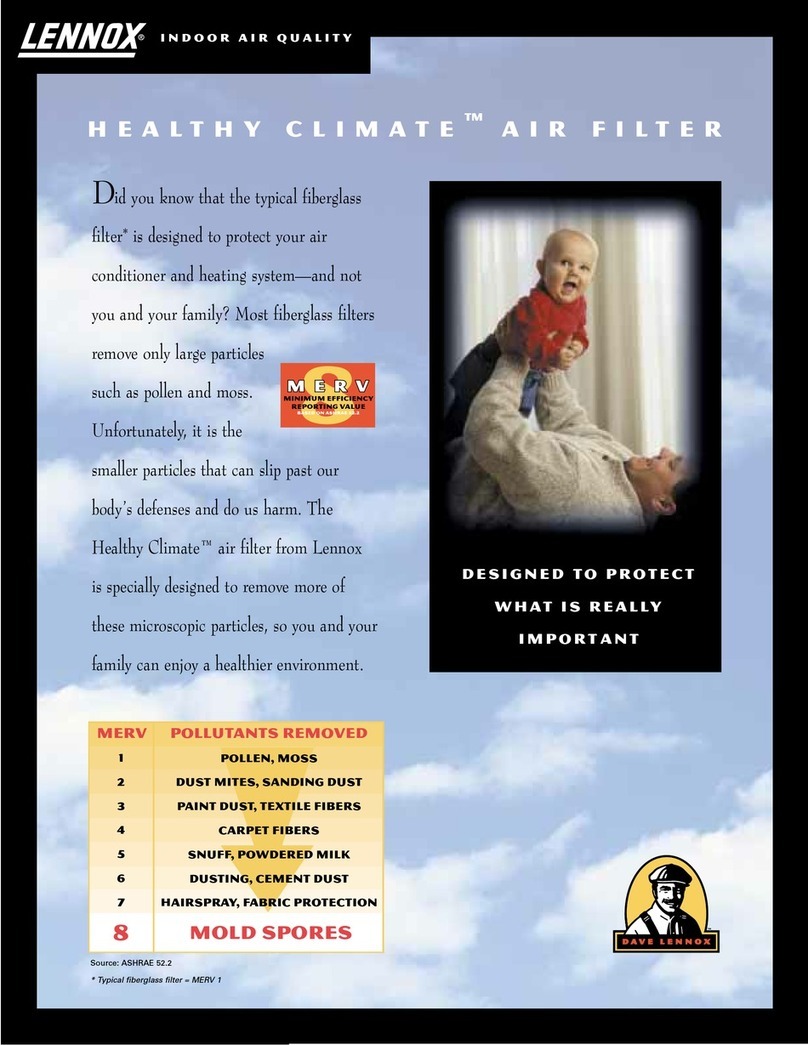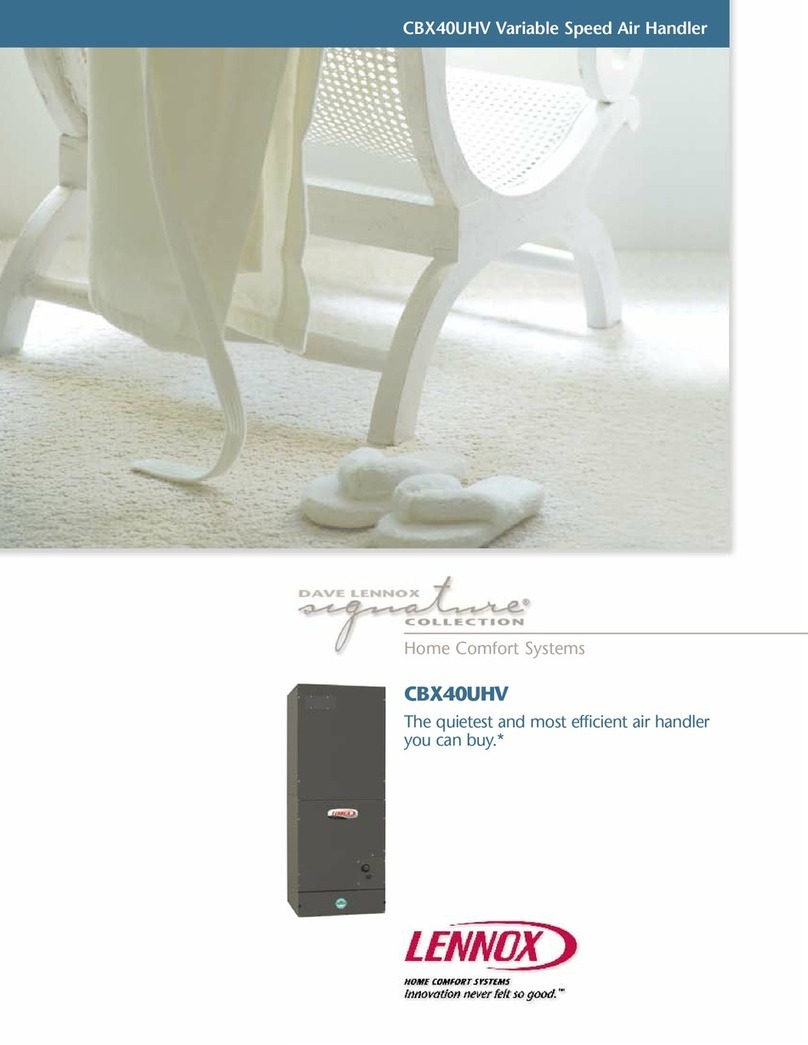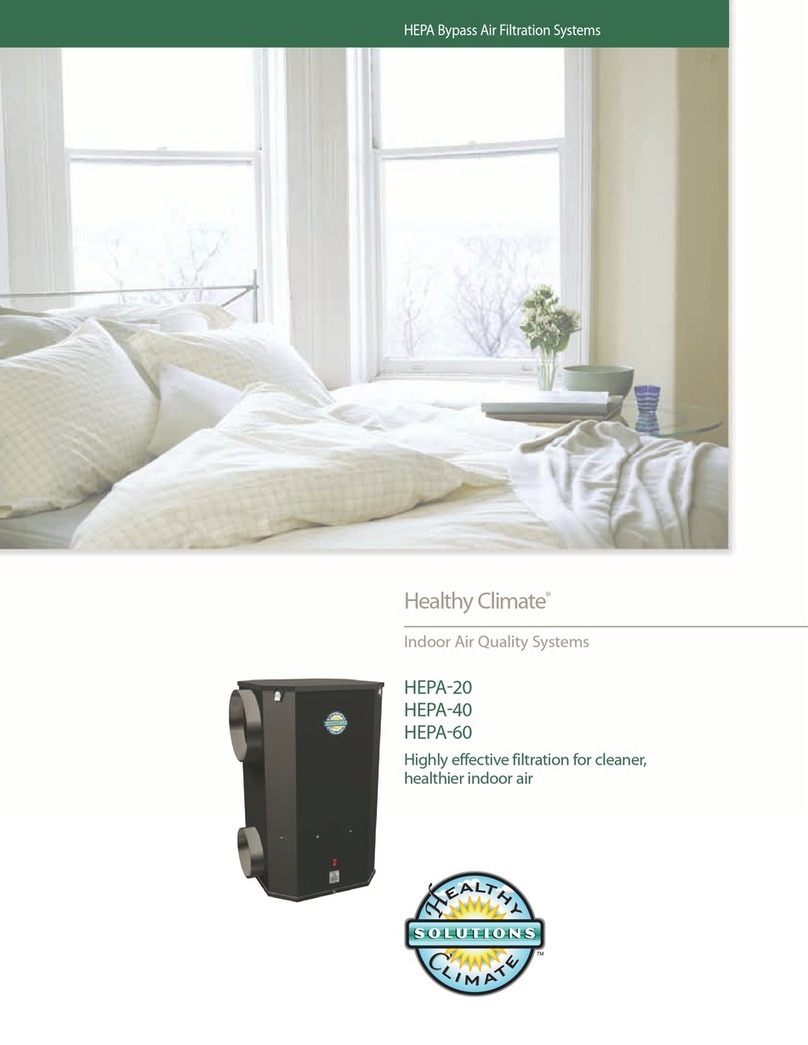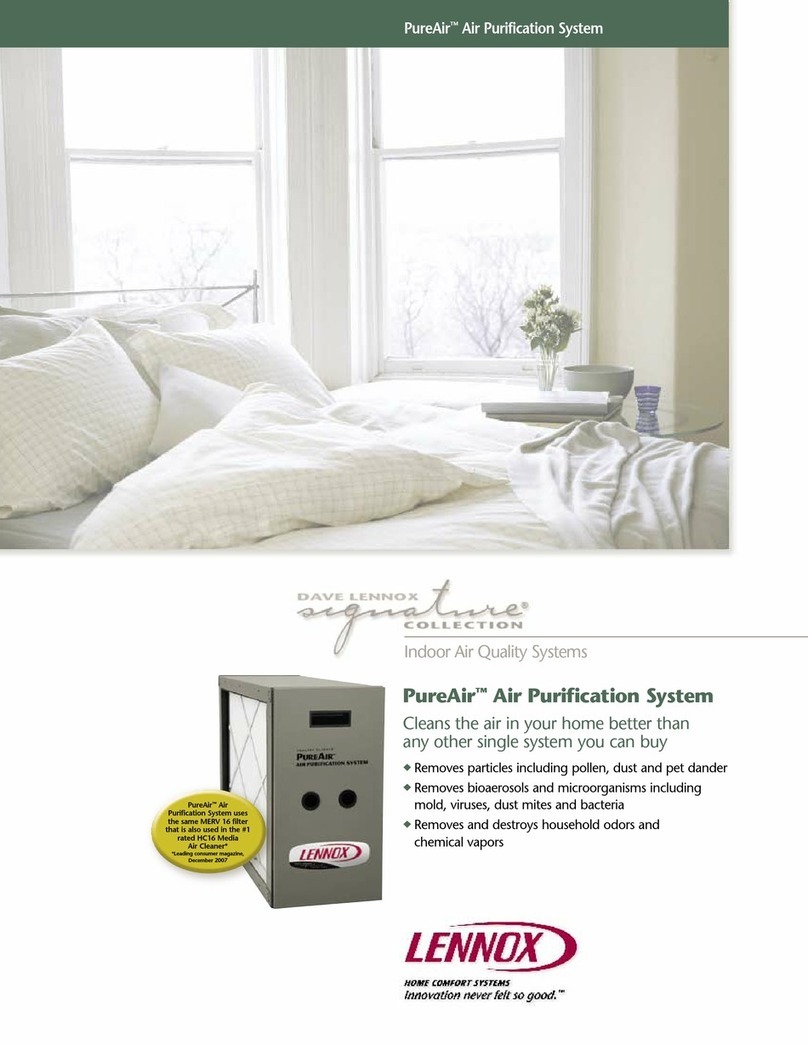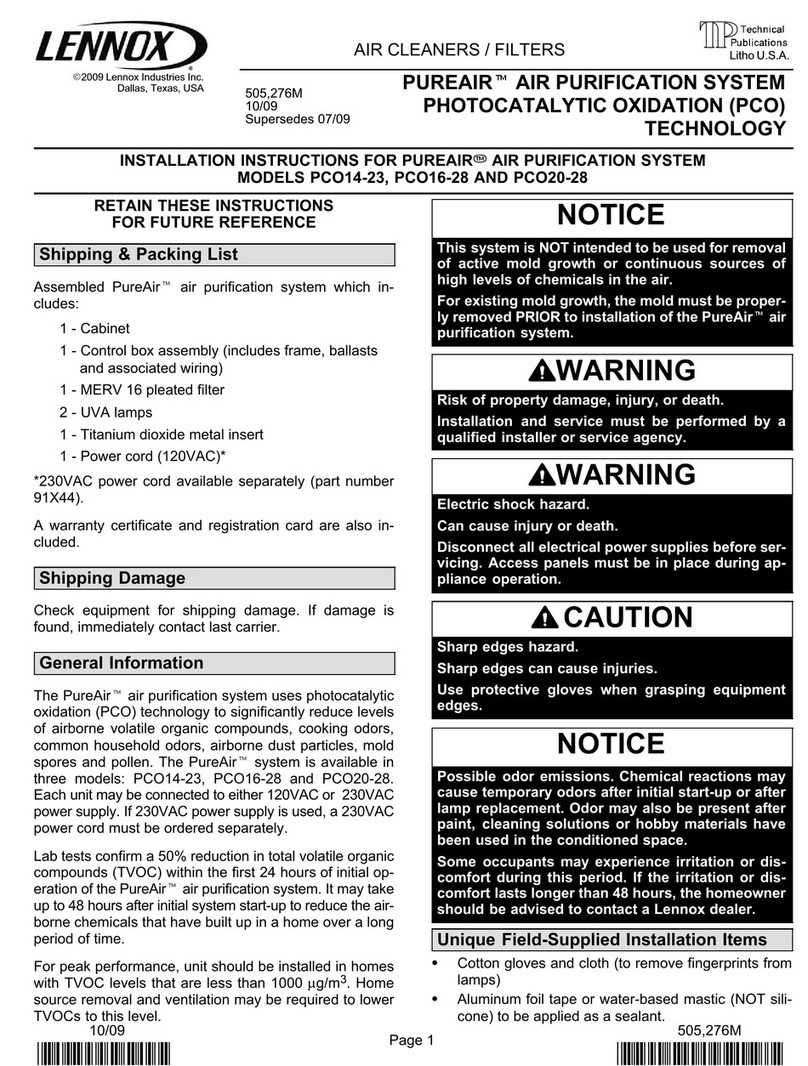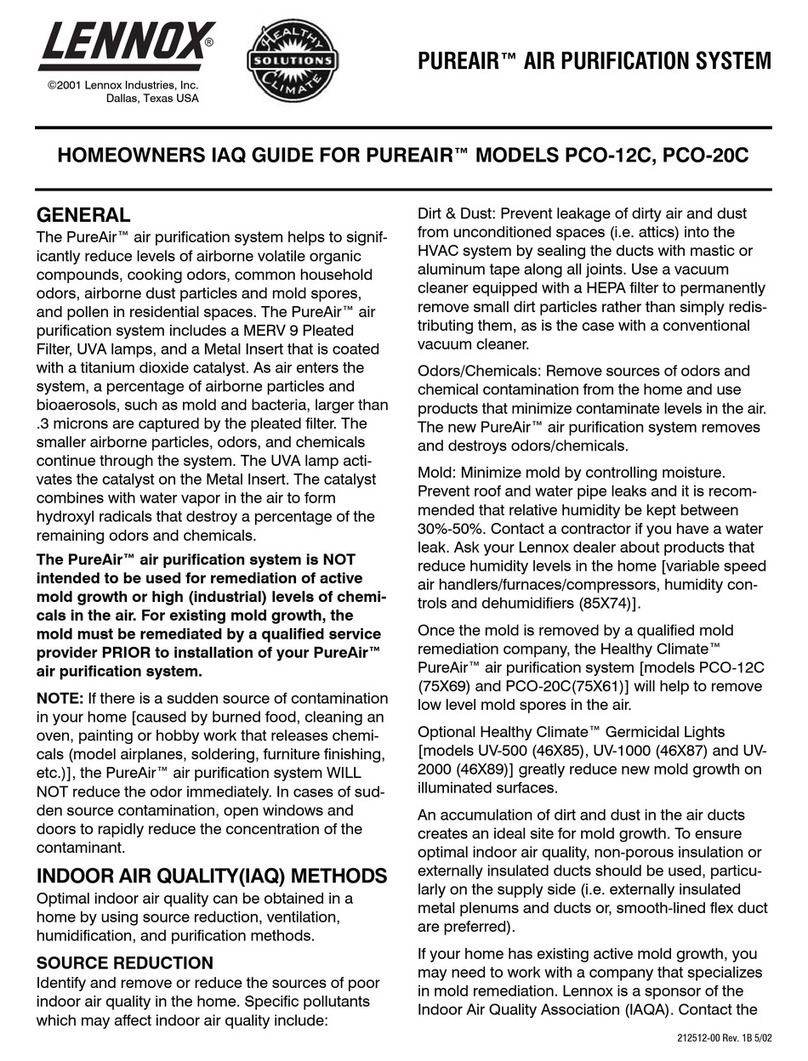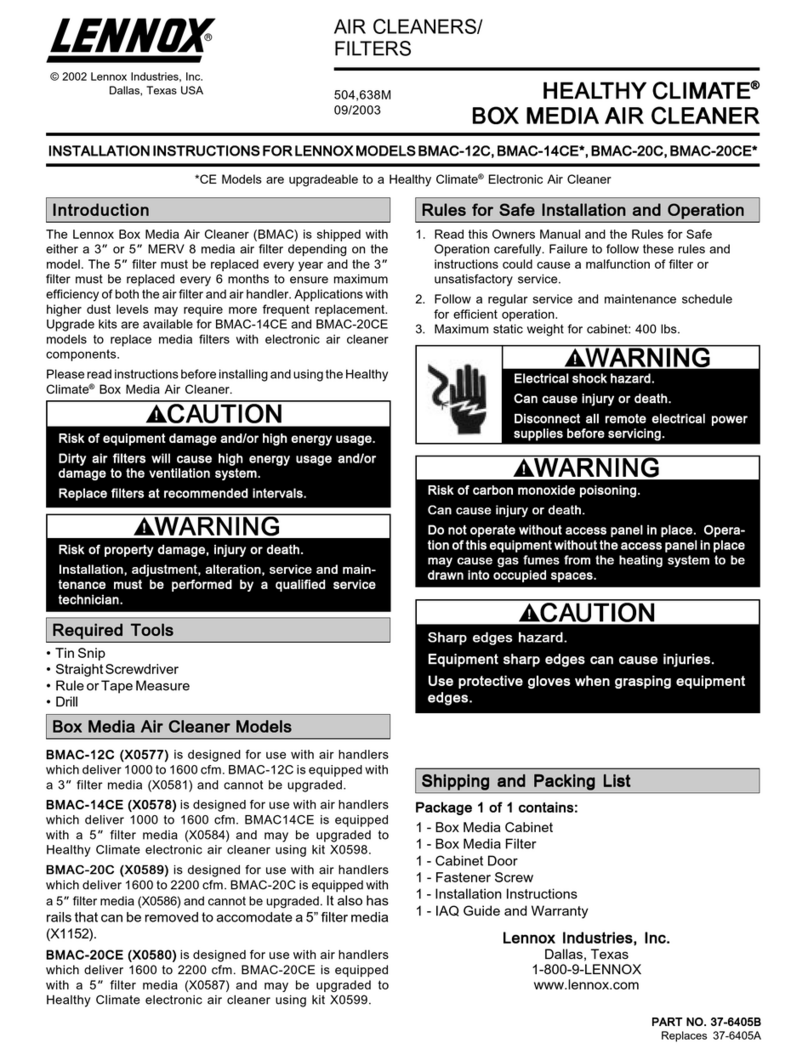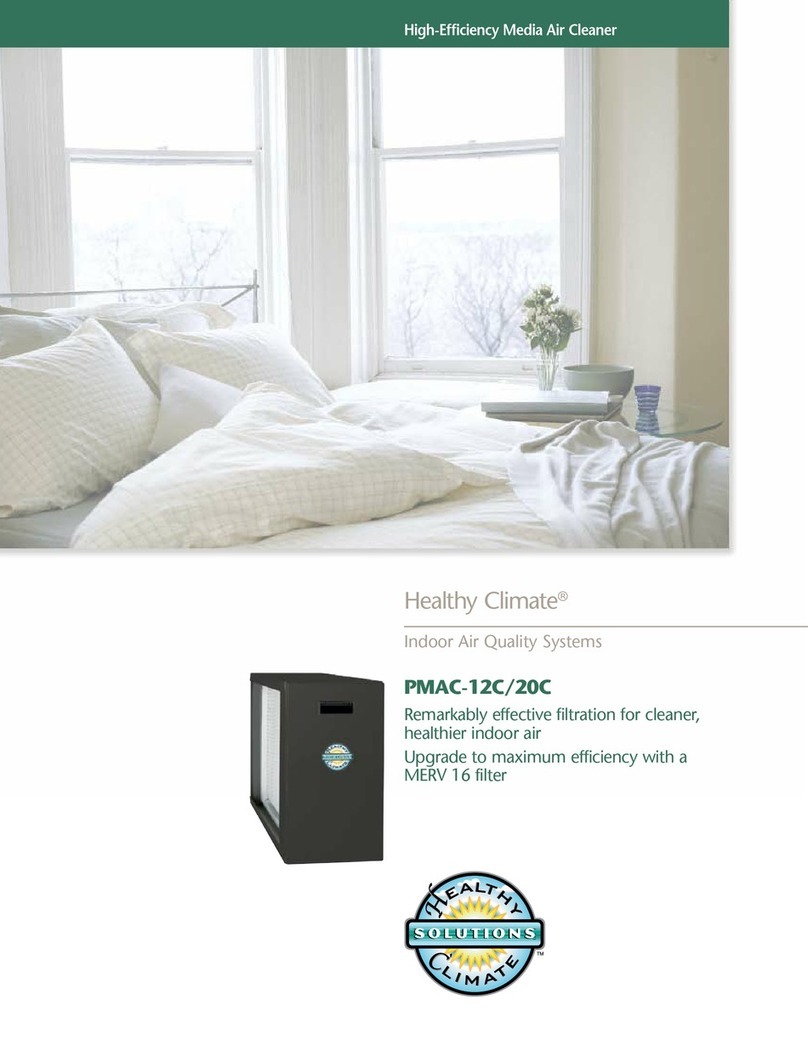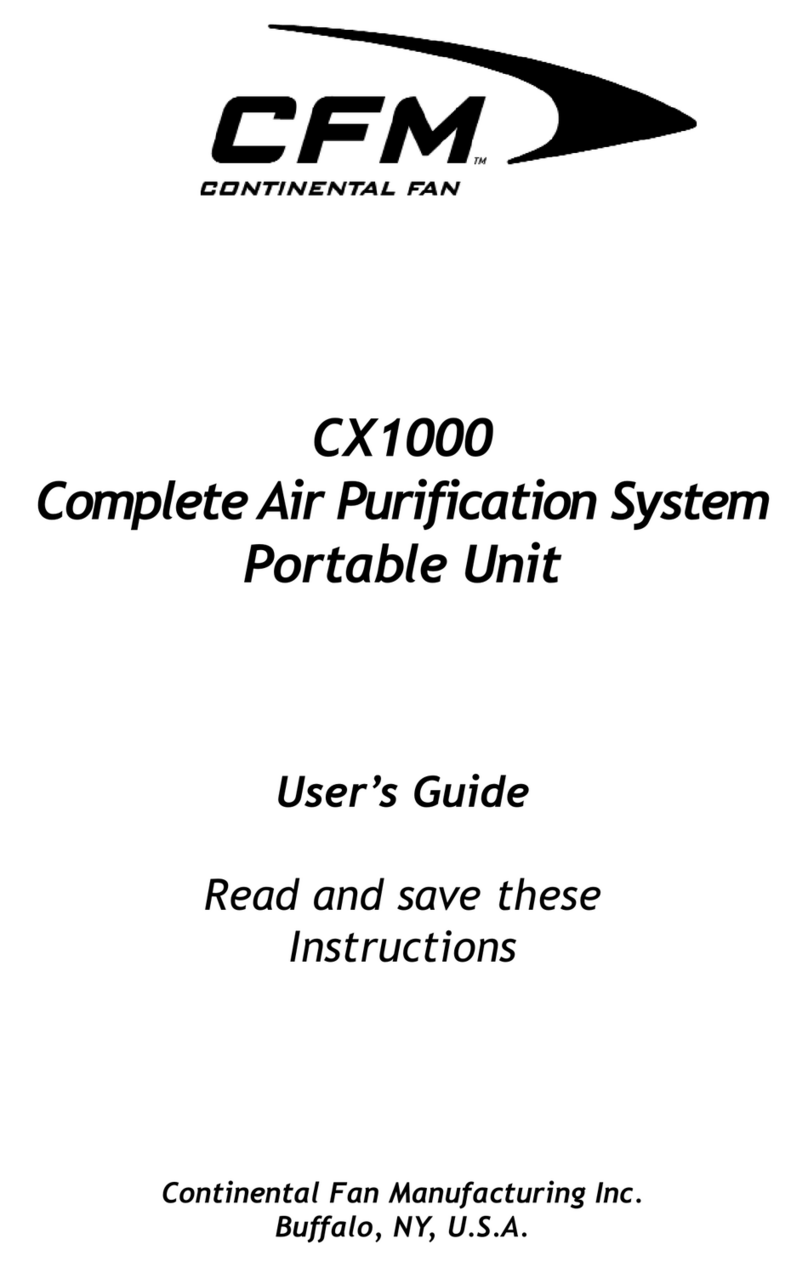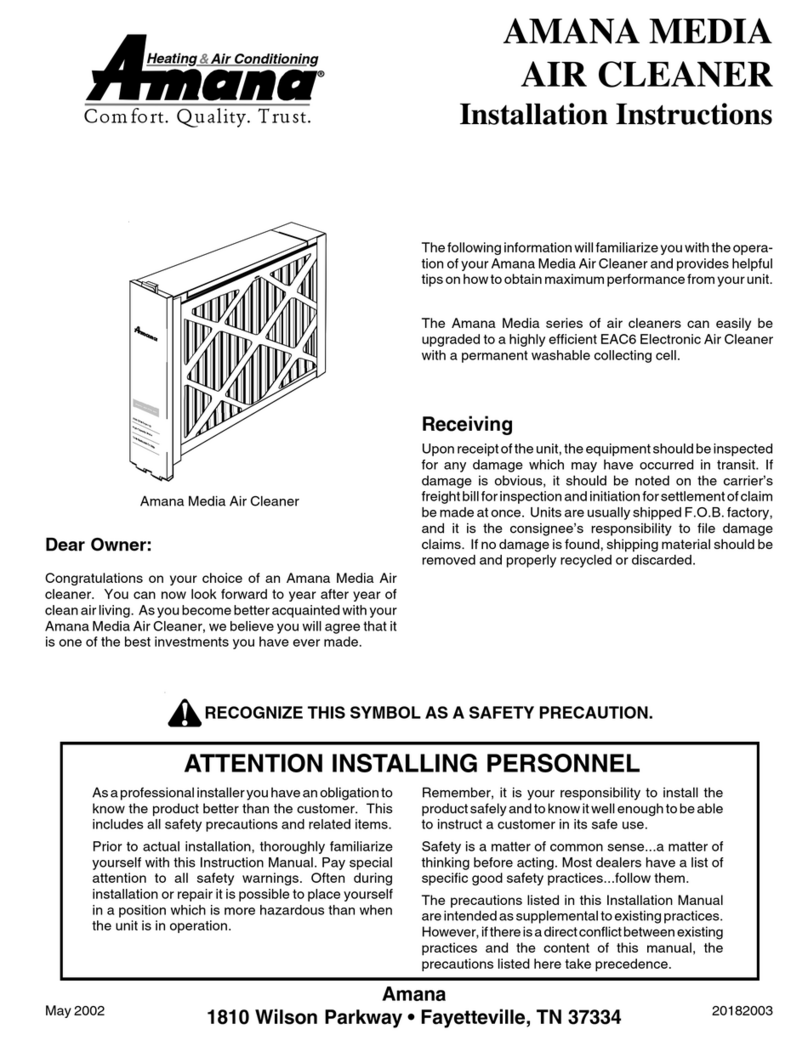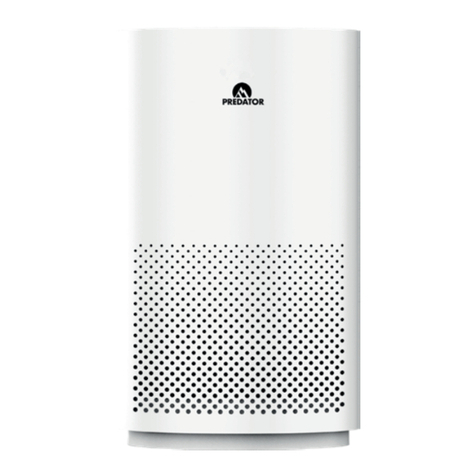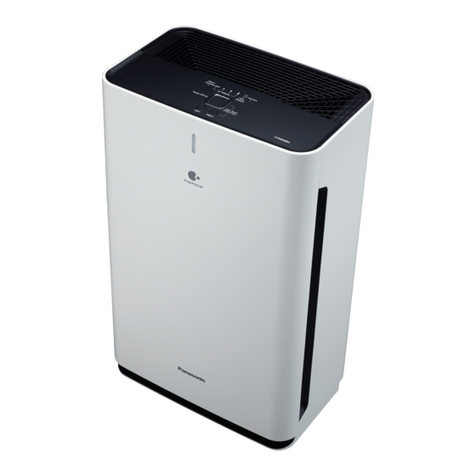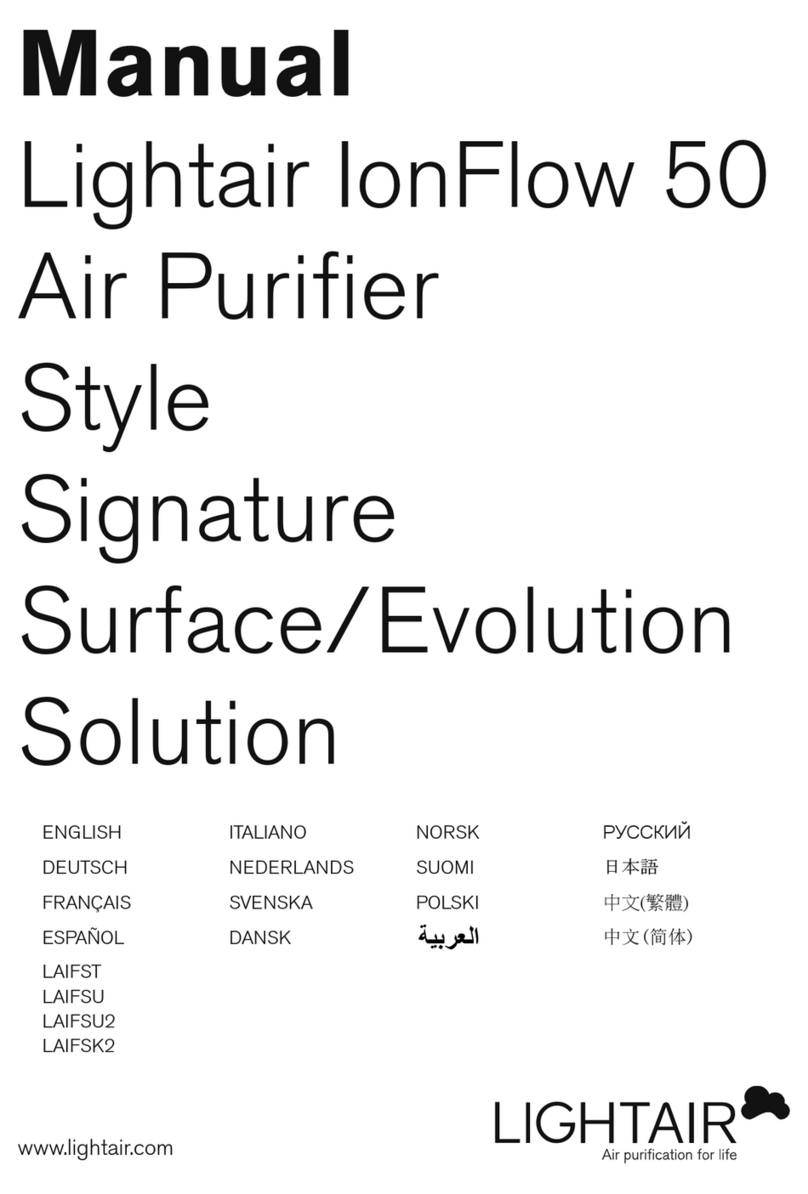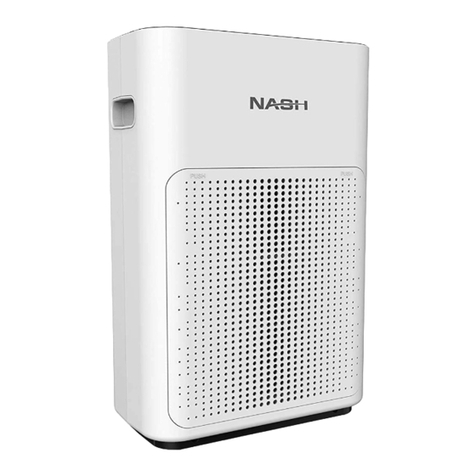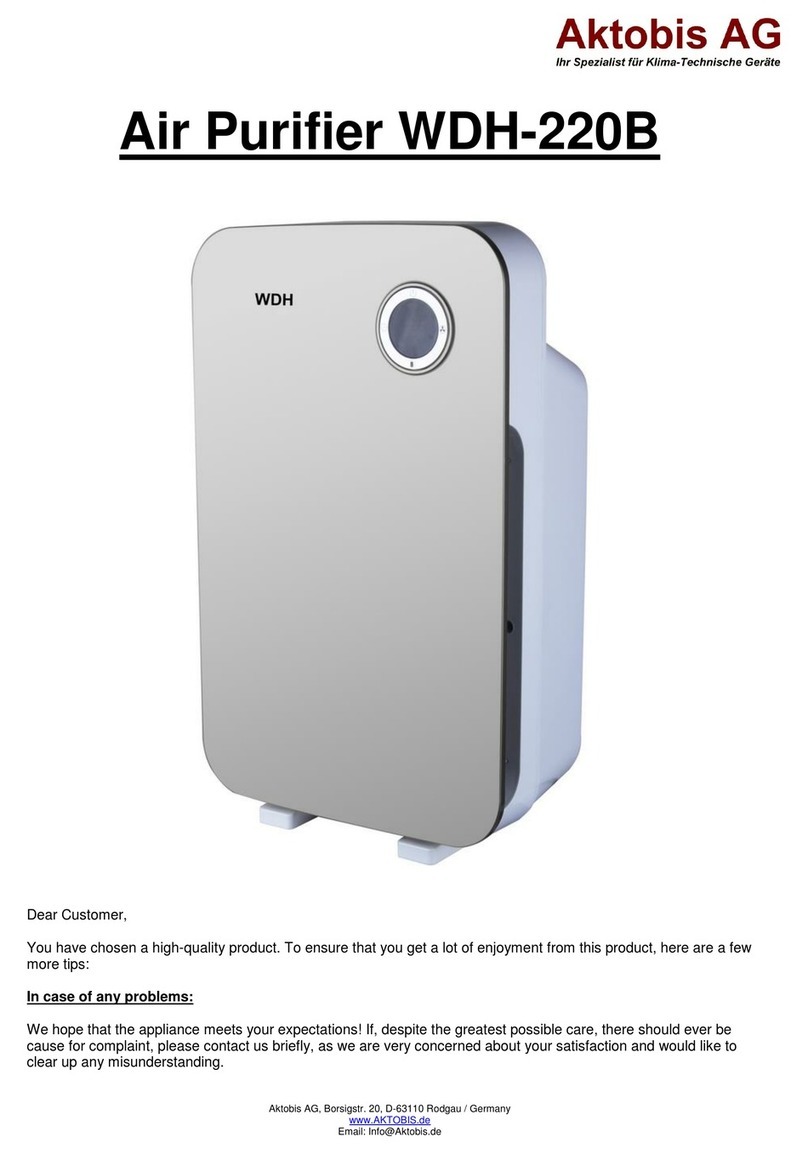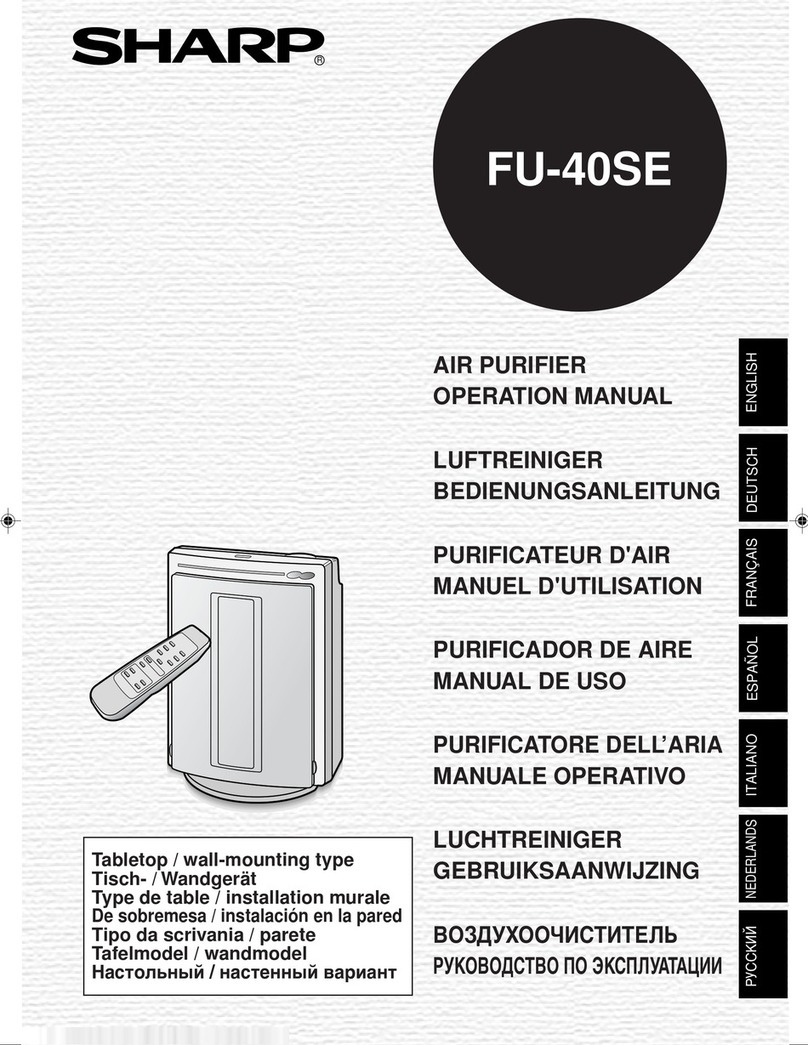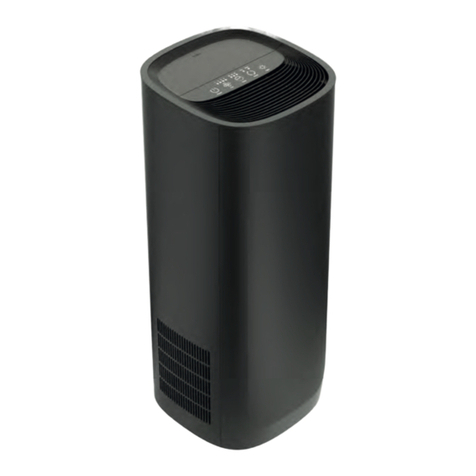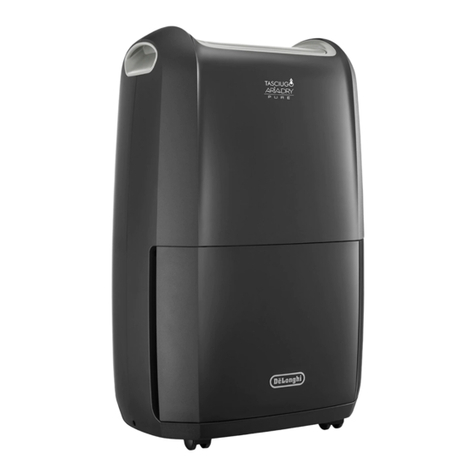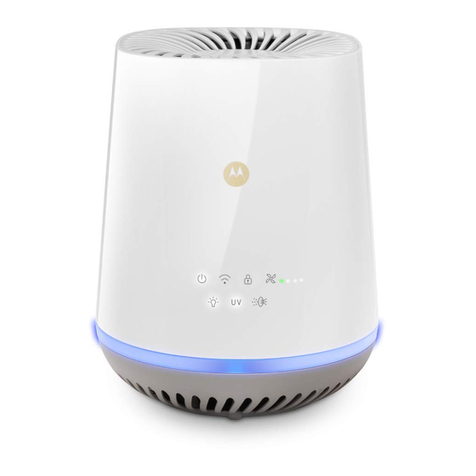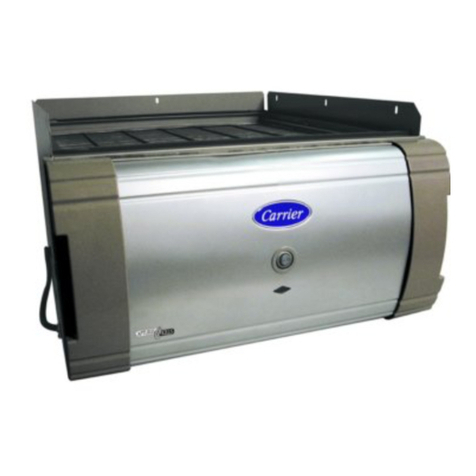
2
AB C
Unfiltered Air In Filtered Air Out
Before installing the air cleaner, make sure it is properly
sized for the application.
Model EAC-14 is designed for application with air han-
dlers which deliver air volumes up to 1600 cfm.
Model EAC-16 is designed for application with air han-
dlers which deliver air volumes up to 2000 cfm.
Model EAC-20 is designed for application with air han-
dlers which deliver air volumes up to 2200 cfm.
Refer to the specifications given on page 9.
Introduction .......................................................................... 1
Rules for Safe Installation and Operation .......................... 1
General Information ............................................................ 2
Parts Identification .............................................................. 3
Preinstallation ...................................................................... 4
Installation ........................................................................... 6
Wiring Instructions ............................................................... 7
Operation ............................................................................. 8
Maintenance ........................................................................ 8
Specifications ...................................................................... 9
Basic Service Guide .......................................................... 10
Service ............................................................................... 11
Healthy Climate®Electronic Air Cleaner Upgrade Kit ...... 13
Repair Parts ....................................................................... 14
Air is drawn into the air cleaner from the return air duct. The
air enters the pre-filters (A) where large particles (hair, lint,
etc.) are trapped. The air continues into the ionizing section
(B), where the remaining smaller particles (smoke, dust,
pollen, etc.) are given a positive electrical charge. The
charged particles enter the collecting section (C), which is a
series of aluminum plates which are alternately charged
(negative and positive). See figure 1.
The positive charge of the particles causes them to be
repelled by the positive plates and attracted to the negative
plates where they are collected . . . just as a magnet
attracts iron filings.
The filtered air continues into the air handler where it is
conditioned and distributed throughout the supply air duct
system.
White Dust (Lint)
An electronic air cleaner is designed to collect two major
types of contaminants: ➀ irritants (pollens, spores, molds,
bacteria, etc.) and ➁black soiling contaminants (dirt and
smoke particles).
The residue on the collecting plates of an electronic air
cleaner is black, indicating it is removing dirt from the air
stream. After installing an air cleaner you may notice white
dust on darker colored, flat surfaces throughout your home.
This dust typically includes long linty particles or fibers from
carpets, cotton materials or drapery fabrics. This material is
not collected by the air cleaner because it does not contain
the irritants or soiling contaminants listed above or settles
out of the air before reaching the air cleaner. The presence
of white dust does not indicate an air cleaner requires
service.
Carbon (Charcoal) Filters
Odors are gas molecules, not particles. For best odor
removal options, ask your Lennox dealer about other
Healthy Climate products, such as the PureAirTM air
purification system. However, some gases can be absorbed
by an activated carbon filter or diluted with fresh outdoor
air. When odors are present, the addition of charcoal filters
will neutralize many odors, such as cooking odors, pet
odors, cigar and cigarette odors, ozone, etc. Optional
charcoal filters are available for your Air Cleaner. Refer to
the parts list for the charcoal filter part number for your Air
Cleaner. Charcoal filters must be replaced every six
months, or more frequently if necessary. They cannot be
washed. While there is no rule of thumb for how often they
should be changed, you can use your best judgement
based on the odors you perceive in your environment.
Figure 1
Table of Contents Air Cleaner Sizing
General Information
